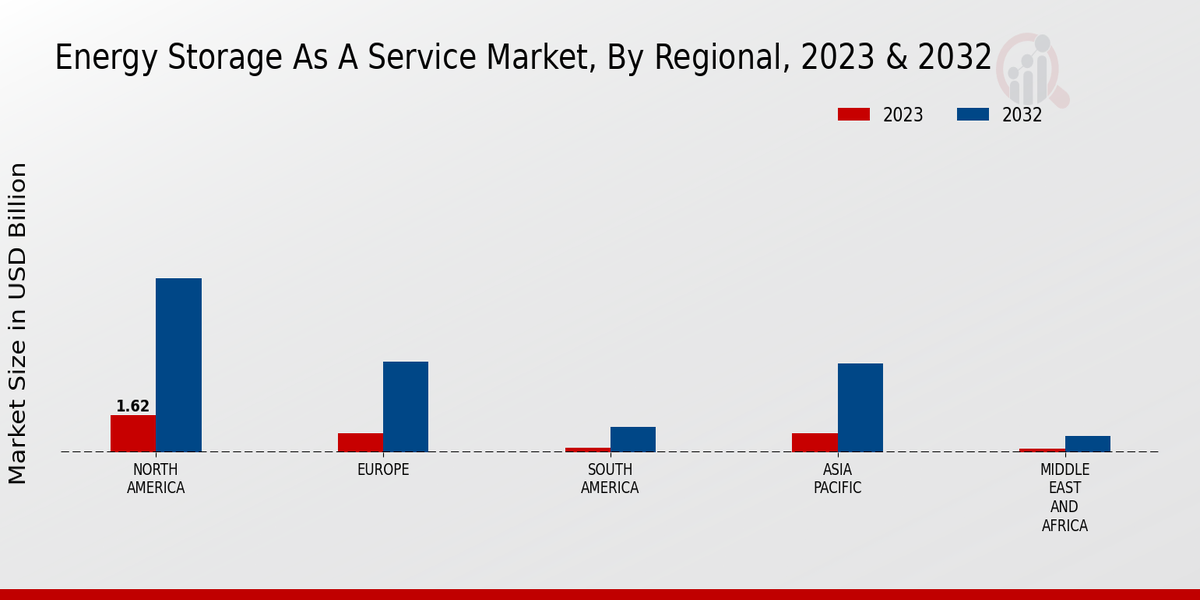Market Growth Projections
Regulatory Support and Incentives
Regulatory frameworks and government incentives play a crucial role in shaping the Global Energy Storage As A Service Market Industry. Many governments are implementing policies that promote energy storage adoption, including tax credits, grants, and favorable tariffs. These initiatives are designed to encourage investment in energy storage technologies, thereby facilitating the transition to a more sustainable energy landscape. The positive impact of such regulations is evident in the projected market growth, as the industry is expected to expand at a CAGR of 19.33% from 2025 to 2035. This regulatory support is likely to foster innovation and drive the deployment of energy storage solutions globally.
Rising Energy Costs and Economic Pressures
Rising energy costs and economic pressures are compelling consumers and businesses to seek cost-effective energy solutions, thereby driving the Global Energy Storage As A Service Market Industry. As electricity prices continue to rise, energy storage systems provide an opportunity to reduce energy expenses by enabling users to store energy during off-peak hours and utilize it during peak demand periods. This economic incentive is particularly appealing in regions with volatile energy prices. Consequently, the market is poised for substantial growth, as stakeholders increasingly recognize the financial benefits of integrating energy storage solutions into their energy management strategies.
Growing Demand for Renewable Energy Integration
The Global Energy Storage As A Service Market Industry is experiencing a surge in demand driven by the increasing integration of renewable energy sources. As countries strive to meet their renewable energy targets, energy storage solutions become essential for balancing supply and demand. For instance, in 2024, the market is projected to reach 5.78 USD Billion, reflecting a growing recognition of the need for reliable energy storage systems. This trend is likely to continue as governments implement policies that incentivize renewable energy adoption, thereby enhancing the role of energy storage in achieving energy security and sustainability.
Increasing Focus on Grid Resilience and Reliability
The need for enhanced grid resilience and reliability is a significant driver of the Global Energy Storage As A Service Market Industry. As extreme weather events and aging infrastructure challenge traditional energy systems, energy storage solutions offer a means to bolster grid stability. By providing backup power and facilitating demand response, energy storage systems can mitigate the impacts of outages and fluctuations in energy supply. This focus on resilience is likely to contribute to the market's growth, as stakeholders recognize the importance of investing in technologies that ensure a reliable energy supply in the face of increasing disruptions.
Technological Advancements in Energy Storage Solutions
Technological innovations in energy storage systems are propelling the Global Energy Storage As A Service Market Industry forward. Advances in battery technologies, such as lithium-ion and solid-state batteries, are enhancing energy density, efficiency, and lifespan. These improvements not only reduce costs but also increase the viability of energy storage solutions for various applications. As a result, the market is expected to grow significantly, with projections indicating a rise to 40.4 USD Billion by 2035. This growth is indicative of the industry's potential to provide scalable and efficient energy storage solutions that meet the evolving needs of consumers and businesses alike.





















